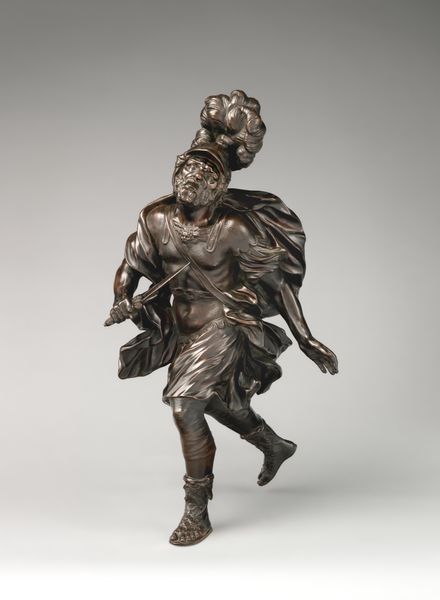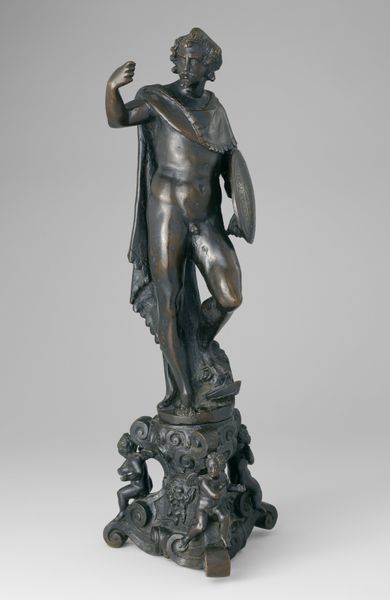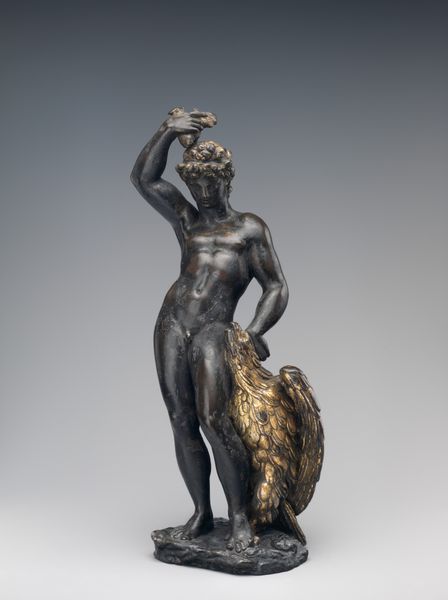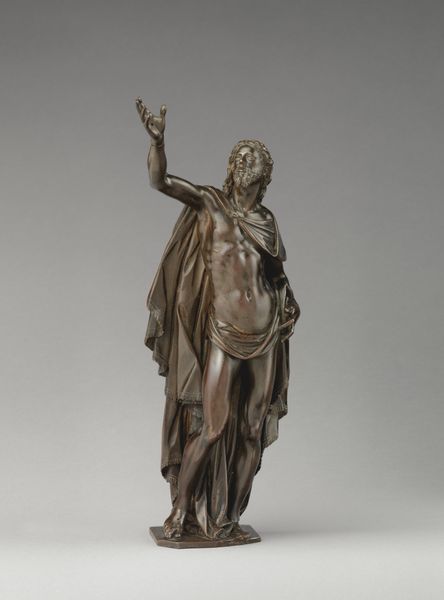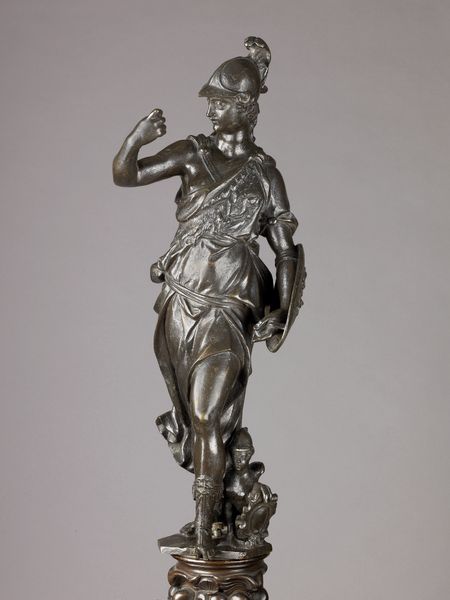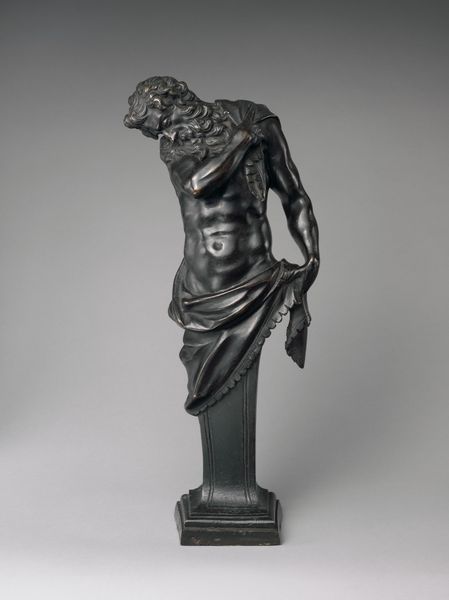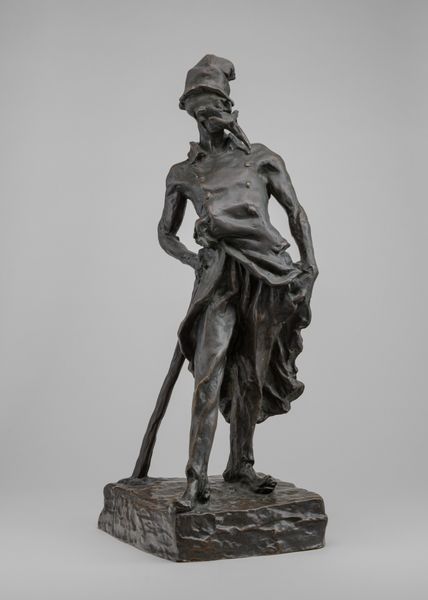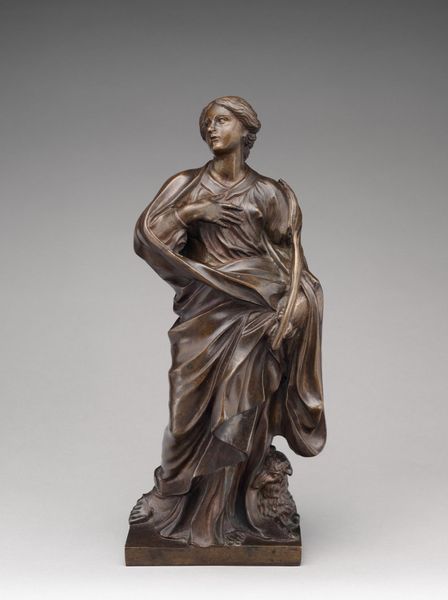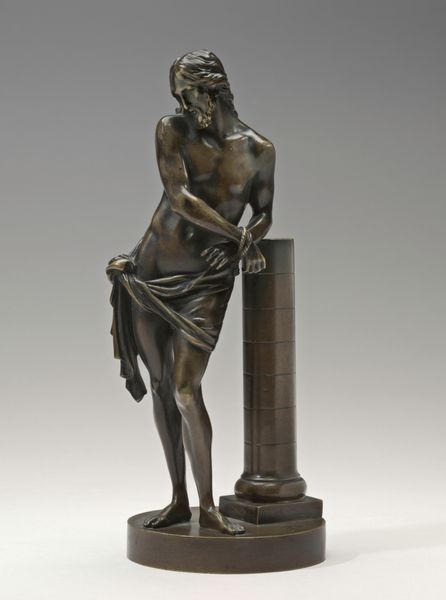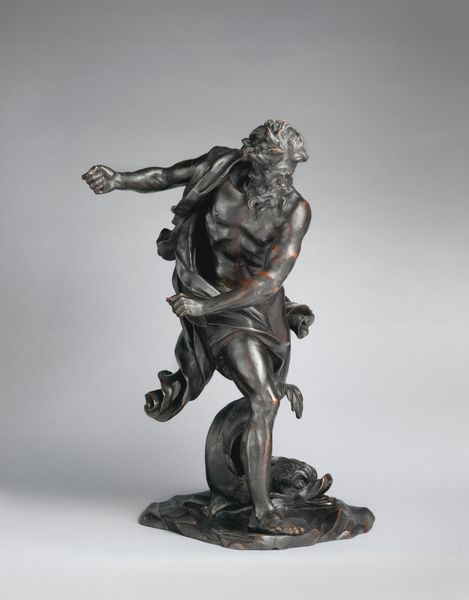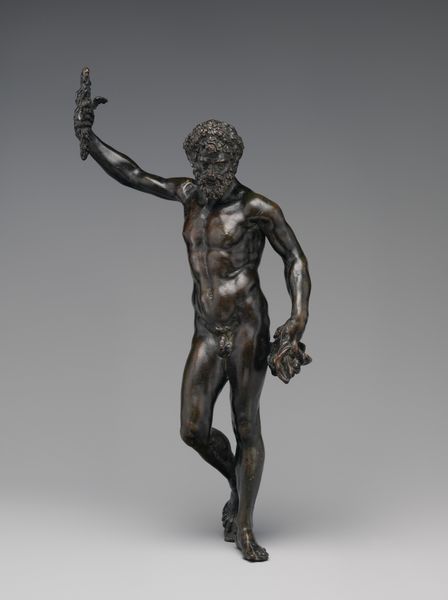
bronze, sculpture
#
baroque
#
sculpture
#
bronze
#
figuration
#
sculpture
#
decorative-art
Dimensions: wt. confirmed: 21 3/4 in., 44.9 lb. (55.2 cm, 20.4 kg)
Copyright: Public Domain
Curator: This bronze sculpture, dating back to around 1700, depicts Ceres, the Roman goddess of agriculture, fertility, and grain. It's the work of Michel Anguier and resides here at the Metropolitan Museum of Art. Editor: She's commanding, isn't she? A bit severe, but in a powerful way. And that bronze...it feels heavy, ancient. Like she's always been here, watching over us. It gives you the feeling of both stability and immense underlying force. Curator: Indeed. The Baroque era favored dramatic presentation, and Anguier certainly delivers. Think of Ceres as not just a deity of agriculture but also a symbol of maternal power in a patriarchal society. How she yields her resources, so to speak, carries considerable social and economic weight. Editor: Absolutely, and the detail! I am curious what that dragonlike creature at her feet is? What does it evoke or represent to you? And is it a bit subdued for having angered such a fertile goddess? Curator: Scholars have speculated the figures near her feet—dog, dragon, serpent—may relate to seasonal agricultural cycles, fertility, protection of livestock. Perhaps symbolizing the threats to the harvest that Ceres, by divine right, has power to subdue. Furthermore, that period, with France establishing colonial presence and exerting ever stronger influence on trade routes across continents, definitely imbued these agricultural themes with specific implications about how this “fertility” was actually secured, at immense cost. Editor: Hmmm. You can certainly perceive her more broadly. The tension between her regal authority and the implication that that very same regal state and power also hinges on subjugation creates a complicated feeling, for sure. As for this particular sculpture, her very particular gaze still hints to me at the human within, a spark of potential benevolence? I suppose it just strikes me. Thanks. Curator: Thank you for sharing. It certainly does underscore that such artistic achievements should lead to a broader contemplation and investigation of intertwined social and historical narratives. Editor: Well, there's definitely something haunting, thought-provoking...she gets to you. Doesn't she?
Comments
No comments
Be the first to comment and join the conversation on the ultimate creative platform.
